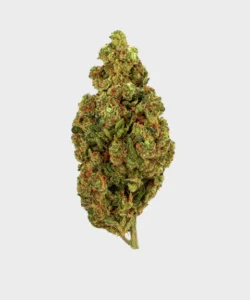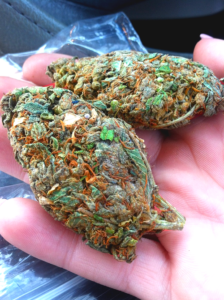
Article: Weed in Badr Hunayn — A Deep Dive
Introduction
The mention of Badr and Hunayn immediately evokes images of early Islamic military history — they are sites of two significant battles during the Prophet Muhammad’s lifetime. But what does “weed in Badr Hunayn” mean in a modern context? Does cannabis have any historical association with these locations, and what is the status of weed (cannabis) in that region today? This article unpacks these questions by combining historical narrative, legal reality, and cultural perspectives in the Kingdom of Saudi Arabia. Weed in Badr Hunayn
1. Historical Context: Badr and Hunayn Weed in Badr Hunayn
1.1 The Battle of Badr
- The Battle of Badr was a key early battle in Islamic history. It took place in 624 CE (2 AH) between the Muslims led by Prophet Muhammad and the Quraysh of Mecca. (Wikipedia)
- It was a decisive victory for the Muslims, despite being outnumbered. (Wikipedia)
- The aftermath of Badr significantly bolstered the standing of the early Muslim community.
1.2 The Battle of Hunayn Weed in Badr Hunayn
- The Battle of Hunayn occurred later, in 630 CE (8 AH), shortly after the conquest of Mecca. (Wikipedia)
- It was fought in the Hunayn valley, against Bedouin tribes such as the Hawazin and Thaqif.
2. Cannabis in Saudi Arabia: Legal Landscape Weed in Badr Hunayn
To talk about “weed” in Badr and Hunayn today, we must shift to the present-day Kingdom of Saudi Arabia, because both places lie within modern Saudi territory.
2.1 Current Legal Status
- Cannabis (weed) is strictly illegal in Saudi Arabia. (Wikipedia)
- There is no distinction in Saudi law between recreational cannabis, medical marijuana, cannabidiol (CBD), or hemp — all are treated as narcotics. (
2.2 History of Enforcement and Smuggling
- Saudi Arabia has a long-standing effort to control drug smuggling.
- A scholarly paper notes that a large proportion of hashish users in the past were young people, including students.
2.3 Recent Developments and Zero Tolerance Weed in Badr Hunayn
- As of 2025, there’s no sign of legalization or decriminalization of cannabis in Saudi Arabia.
3. Cultural and Religious Dimensions Weed in Badr Hunayn
3.1 Islamic Ethics and Intoxicants
- In many Islamic interpretations, intoxicants (khamr) are forbidden (haram) because they impair judgment. This forms part of the religious basis for strict drug laws.
- While classical Islamic jurisprudence mostly focused on alcohol, modern states apply similar reasoning to other intoxicants like cannabis. The religious and cultural discouragement of mind-altering substances helps justify the tough legal stance.
3.2 Social Stigma
- Even beyond legal penalties, there is a strong social stigma associated with drug use in Saudi Arabia. Using cannabis can lead to social ostracism, not just criminal consequences.
- For non-Saudis (foreigners), enforcement can be especially risky. Foreign nationals caught with drugs may face deportation in addition to punishment.
4. Is There Historically
Given that Badr and Hunayn are primarily historical battlefields, the question of “weed” there is more metaphorical than literal. There is no reliable historical record from early Islamic sources that links these locations to cannabis cultivation, trade, or use:
- Primary historical sources on the Battles (e.g., hadith, early biographies) focus on military strategy, participants, spoils, captives—not on drugs.
Thus, if someone refers to “weed in Badr Hunayn,” they are likely speaking metaphorically or speculatively, or mistakenly conflating modern cannabis issues with historical sites.
5. Risks and Realities Today
5.1 For Locals and Saudis
- For Saudi citizens, being caught with cannabis can result in imprisonment, lashing, and possibly even more severe punishments if trafficking is involved.
- Because of the cultural and legal barriers, many Saudis avoid discussion or use of weed altogether.
5.2 For Foreigners and Pilgrims
- Foreign visitors (e.g., pilgrims coming to Mecca, Medina, or nearby places) must be especially careful: cannabis in any form is prohibited, and foreigners may be deported after serving sentences for drug-related offenses.
5.3 Public Health and Rehabilitation
- Saudi Arabia has programs for drug rehabilitation.
- However, given the zero-tolerance stance, the focus tends more toward law enforcement than harm reduction or cannabis policy reform.
6. Ethical and Policy Considerations Weed in Badr Hunayn
6.1 Human Rights and Punishment
- Critics argue that Saudi Arabia’s approach to drug offenses raises human rights concerns. Corporal punishment (whipping) and the death penalty for drug trafficking are particularly controversial.
6.2 The Medical Cannabis Debate
- In the Arab world more broadly, there is growing interest in medical cannabis.
- Any future reform would involve complex interaction of religious, political, and social factors.
6.3 Societal Implications
- The strict drug laws serve as a deterrent, but they also drive usage underground.
- There might be a tension between public health (treating addiction) and punitive justice.
7. Conclusion Weed in Badr Hunayn
- The phrase “Weed in Badr Hunayn” doesn’t have a historical basis in early Islamic sources; Badr and Hunayn are remembered for their battles, not for drug cultivation or use.
- In modern-day Saudi Arabia, cannabis is strictly illegal, with heavy penalties for possession, distribution, or trafficking.
FAQs (Frequently Asked Questions) Weed in Badr Hunayn
- Is cannabis legal in Saudi Arabia?
No. Cannabis (all forms) is illegal. Possession, use, cultivation, and trafficking are criminal offenses. (Wikipedia) - What are the penalties for cannabis possession?
For personal use, first-time offenders may face 1–6 months in prison, and possibly whippings. - Can you be executed for trafficking cannabis in Saudi Arabia?
Yes, in extreme trafficking cases, offenders may face the death penalty.
No. Saudi law does not distinguish between recreational and medical cannabis — all are illegal. - Does “weed in Badr Hunayn” refer to historical cannabis use in the battles of Badr and Hunayn?
No. There is no evidence in classical Islamic sources linking those historical battles to cannabis. The phrase is likely metaphorical or misplaced.
I have used Global Weedworld (Globalweedworld@galaxyhit.com) at least 4-10 times and every time it has been a top notch.
He is the best local plug you can find around. He is very pleasant, friendly and fast. He is a lifesaver.
He sells top shelf WEED and other stuffs at moderate prices. I will always recommend this guy when people ask me my ” go-to”.
All you have to do is follow his instructions.
Just send him an email and I bet you will come back for more once you finish with what you bought because his quality is amazing.
Also Contact him on his telegram link telegramhttps://t.me/GlobalweedWorld
⚠️ Know that he do not have telegram channels only the telegram link above

The strain was exactly what I was looking for. It had that perfect balance, and the high was smooth. Also, the packaging was discreet and professional. Really impressed
I’ve been buying online for a while, but this shop’s service and product quality set them apart.
Everything was fresh, potent, and the customer service is outstanding
My first purchase and I’m hooked.
Excellent product and the customer support was super helpful in answering all my questions. Highly recommend this site
From browsing to checkout, everything was seamless. Delivery was on time, and the product exceeded my expectations. I’ll be recommending this to my friends
told me that he doesn’t accept cash and i thought he is one of those idiots who took advantages of people but i decided to give him a try by making the payment first using bitcoin, surprisingly he arrived within the time he promised me and i received what i ordered. thank you, Global weed world, whenever i return here you will always be my plug without doubt.
I’ve been buying from a lot of different places, but this one stands out. The bud is top-notch, and the prices are reasonable.
Will be ordering again soon! Amazing experience! The product was exactly as described,
and the packaging was on point—safe and odor-free. Thank you!
Delivery was crazy fast, and the product… This place is setting the bar for online weed shops. Keep doing what you’re doing. You’ve got a loyal customer for life.
I was worried about ordering online, but the packaging was perfect completely. You can tell they care about their customers. Fast replies and reliable support.